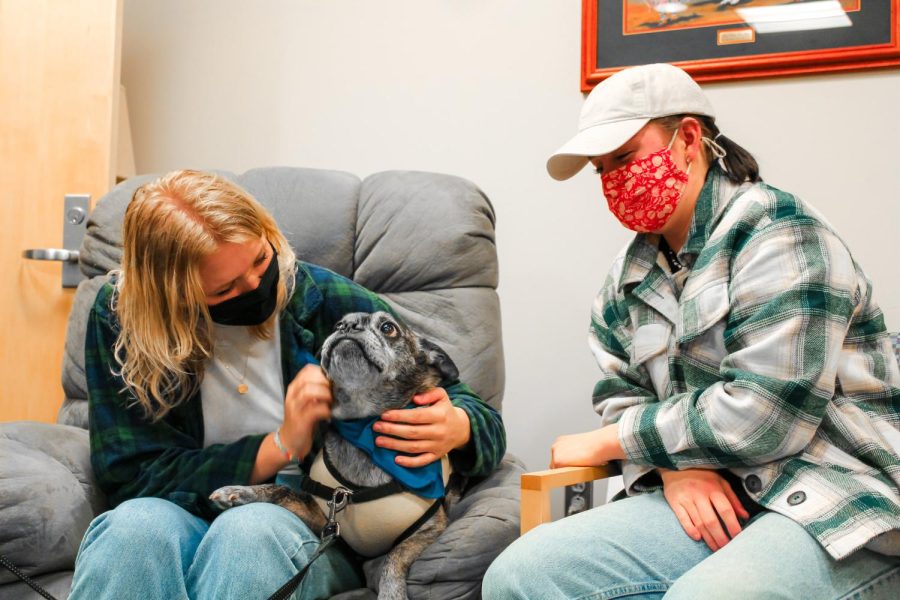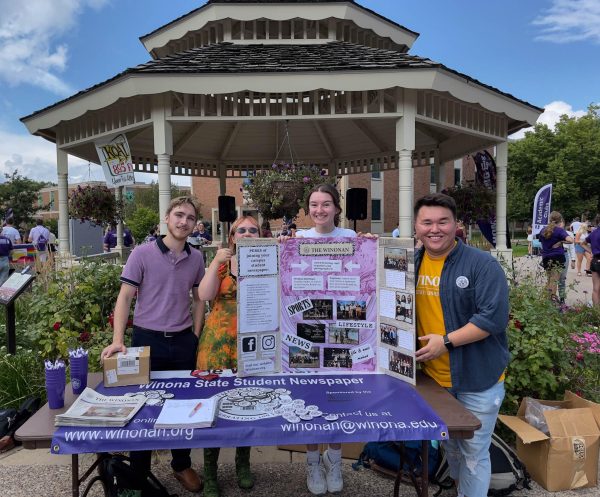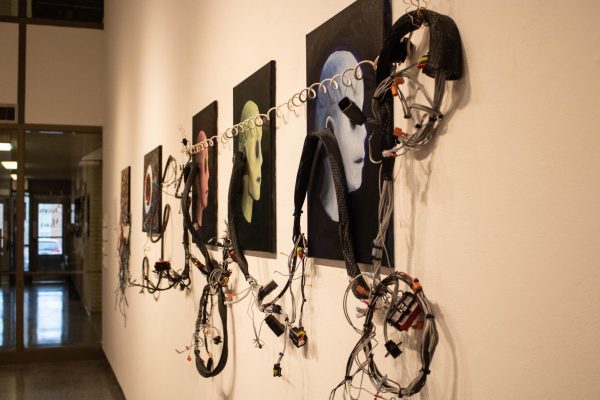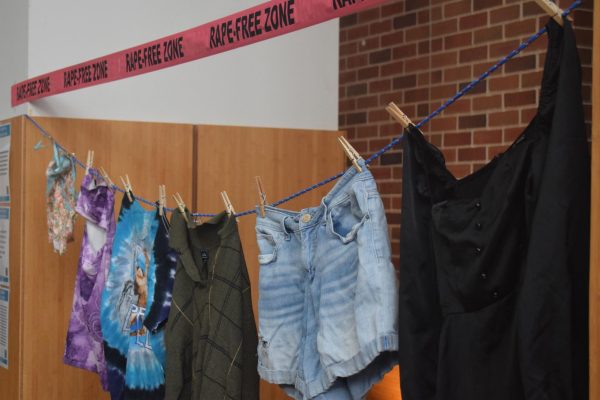Campus therapy dogs approach retirement
With Winston and Aiden getting older, the longer-term future of therapy dogs on campus is more-or-less up in the air. Brzezinski hopes to potentially train a younger dog to integrate into counseling sometime in the future.
April 27, 2022
Winona State University’s Counseling Services has integrated therapy dogs into their system for the past ten years, and with therapy dogs Winston and Aiden getting older, therapy dog sessions are unfortunately getting to be less frequent.
Lynda Brzezinski, a psychologist on campus and owner of the therapy dogs, touched on the importance of having therapy dogs on a college campus.
“There’s a lot of research support for that where students can some- times feel more comfortable in the presence of a dog while talking about difficult things,” Brzezinski said. “The dogs can kind of provide a grounding effect for them if they’re feeling more anxious.”
Along with weekly events such as “PAWS for a Study Break” in the Integrated Wellness Complex (IWC), therapy dogs Winston and Aiden have sat in on counseling sessions to provide a sense of comfort and safety for students.
Eunie Alsaker, the clinical social worker in Counseling Services, echoed Brzezinski’s sentiment toward the positives of having therapy dogs on campus, especially in a counseling session.
“For some students, knowing a dog will be present increases their comfort level during a counseling session,” Alsaker said. “Dogs can actually reduce stress hormones and increase feelings of safety.”
Brzezinski also elaborated on the fact that students often miss their own pets in fall semester, and having therapy dogs on campus helps with the overall adjustment to college by helping with homesickness and stress or anxiety.
Winston is an Australian cattle dog and is now ten years old. Aiden, a Boxer/Pug mix, is also ten years old. Although the dogs are not retiring, they are getting older! Winston and Aiden will still be on campus occasionally, but not on their usual routine basis.
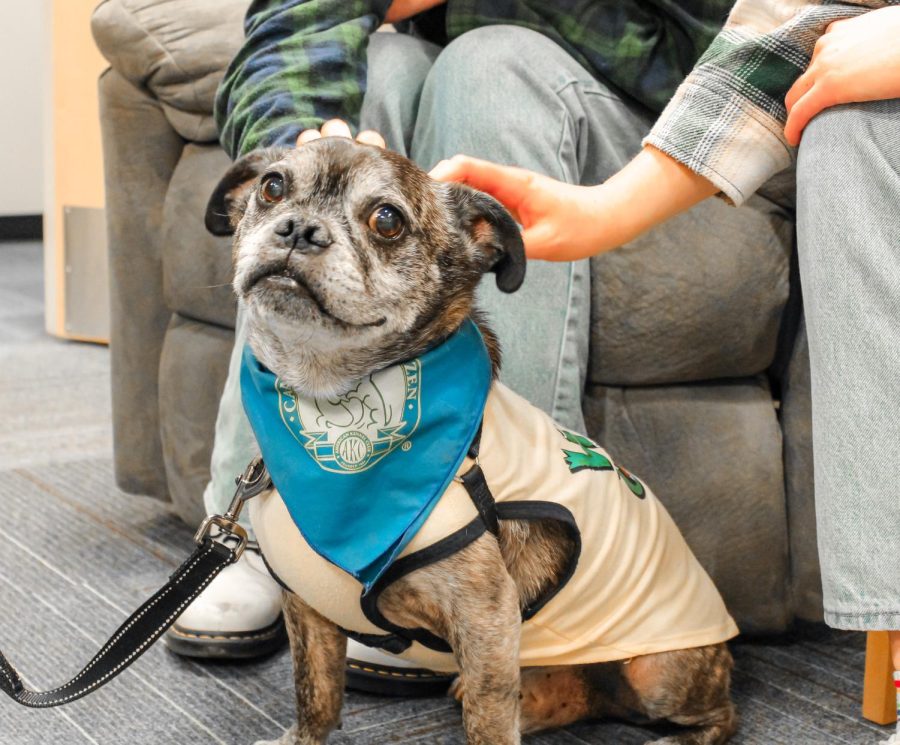
Winona State’s Counseling page has descriptions of each dog and their personalities. For example, under Aiden, it states, “I’m a funny boy and at times you will see me try to catch my very short, very stumpy tail, circling one way and then trying the next direction. I haven’t caught it yet, but I’m very determined!”
“My job at WSU Counseling Services is to help students feel better and more relaxed. A little bit of dog comfort can go a long way,” Winston’s profile states.
As per personal experience and the counseling webpage, Winston and Aiden truly bring so much joy to the students on campus. It’s extremely difficult not to smile at Aiden’s tail-chasing and Winston’s tail-wagging. With both dogs being rescue dogs, it adds to the difficulty of potentially finding younger dogs to integrate into counseling in the future.
“That’s part of my dilemma,” Brzezinski said. “You never know what you’re going to get with a rescue; whether they are good for therapy dog work or not, but any breed can be a therapy dog.”
Brzezinski is hoping to potentially bring in another dog for training, but as of right now, the (long-term) future of therapy dogs on campus is more or less up in the air. Aiden and Winston will continue to come in for a couple more years, and after that, we’ll have to see.
Wednesday, April 27, is the last “PAWS for a Study Break” of the semester. “PAWS for a Study Break” sessions are held in the IWC Relaxation Room located next to Health, Counseling and Wellness Services from 3:30 to 4:30 p.m.
“It’s one of the most rewarding parts of my job – to be able to bring the dogs to campus, because I know how much students really enjoy it,” Brzezinski said. “I love seeing the students’ smiles, and they can’t help but smile when they’re interacting with the dogs.”























































